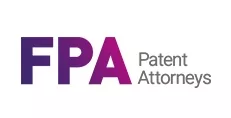By Carol Burnton and Tom Gumley
Compulsory licensing of patents, a highly topical point of discussion in the US and many other countries, has been put squarely on the legal reform agenda as a result of the Australian Government directing the Productivity Commission to inquire into the Australian compulsory licensing regime. A recently published Issues Paper highlights the current concerns with the regime and foreshadows some possible changes. See Compulsory Licensing of Patents, Productivity Commission Issues Paper, August 2012.
The Commission's inquiry arises from a number of earlier reviews regarding the limitations of the current compulsory licensing regime. These reviews include those that focussed on particular technology and related concern, such as patenting of genes, and others that focussed on the limitations and poor usage of the current regime.
What becomes clear is that the findings of the Commission should be relevant to patents covering all technology areas. Those patents that are identified in the Issues Paper as of particular concern include climate change patents, alternative energy patents, food security patents, healthcare and pharmaceutical patents and standards essential patents.
The Terms of Reference require the Commission to:
- assess whether the current Australian provisions can be invoked efficiently and effectively
- recommend any measures to efficiently and effectively exercise these safeguard provisions, in a manner consistent with Australia's international obligations
- recommend any alternative mechanisms, to ensure that the balance between incentives to innovate and access to technology best reflects the objectives of reasonable access to health care solutions, maximising economic growth and growing the Australian manufacturing industry
- recommend measures to raise awareness of the compulsory licensing provisions.
Through the Issues Paper, the Commission identifies a number of measures for improving compulsory licensing. These include clarifying the objectives of compulsory licensing, consolidating compulsory licensing with related provisions enabling access to patented technology such as Crown use and compulsory acquisition, providing for alternative dispute resolution mechanisms, and more generally, raising awareness of the opportunity to obtain compulsory licences.
The Commission will not report until March 2013, so presently it is too early to know how the compulsory licence regime might change as a result of the Inquiry.
On the other hand, the question as to whether there will be change should fairly be answered in the affirmative, particularly given what appears to be an underlying assumption in the Issues Paper that the current regime is neither 'efficient' nor 'effective', and the acceptance of the Australian Government that access to patented inventions should be appropriate in given circumstances, as manifested by the new Australian law providing defence to patent infringement for acts involving experimental use or obtaining regulatory approval. See An easy guide to Australia's new patent law under the Intellectual Property Laws Amendment (Raising the Bar) Act 2012.
The content of this article is intended to provide a general guide to the subject matter. Specialist advice should be sought about your specific circumstances.

